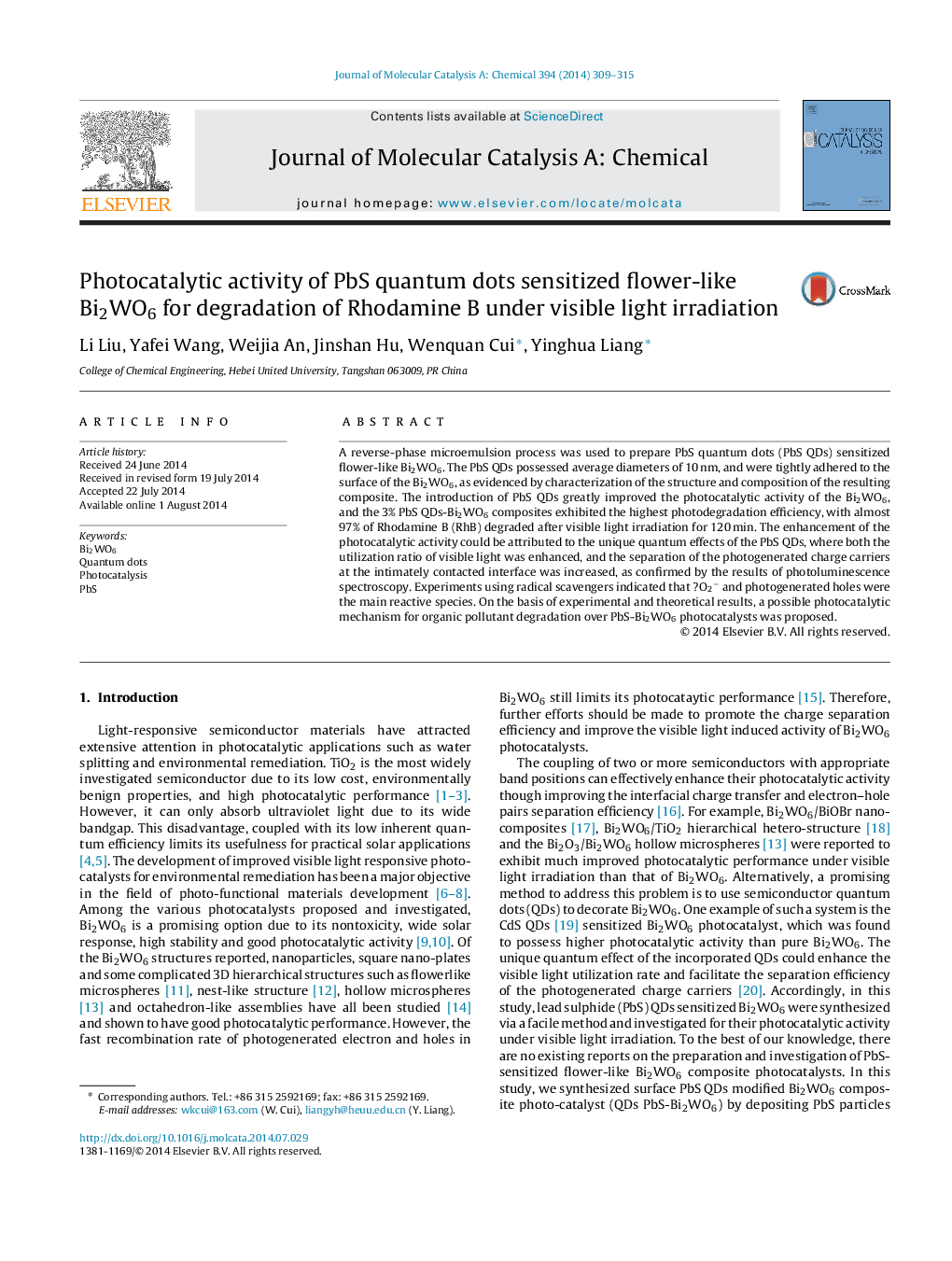| Article ID | Journal | Published Year | Pages | File Type |
|---|---|---|---|---|
| 65437 | Journal of Molecular Catalysis A: Chemical | 2014 | 7 Pages |
•PbS QDs modified Bi2WO6 was successfully synthesized by a reverse micro-emulsion method.•PbS QDs greatly increased visible light absorption for Bi2WO6.•The photocatalyst exhibited high activities for RhB degradation.
A reverse-phase microemulsion process was used to prepare PbS quantum dots (PbS QDs) sensitized flower-like Bi2WO6. The PbS QDs possessed average diameters of 10 nm, and were tightly adhered to the surface of the Bi2WO6, as evidenced by characterization of the structure and composition of the resulting composite. The introduction of PbS QDs greatly improved the photocatalytic activity of the Bi2WO6, and the 3% PbS QDs-Bi2WO6 composites exhibited the highest photodegradation efficiency, with almost 97% of Rhodamine B (RhB) degraded after visible light irradiation for 120 min. The enhancement of the photocatalytic activity could be attributed to the unique quantum effects of the PbS QDs, where both the utilization ratio of visible light was enhanced, and the separation of the photogenerated charge carriers at the intimately contacted interface was increased, as confirmed by the results of photoluminescence spectroscopy. Experiments using radical scavengers indicated that ?O2− and photogenerated holes were the main reactive species. On the basis of experimental and theoretical results, a possible photocatalytic mechanism for organic pollutant degradation over PbS-Bi2WO6 photocatalysts was proposed.
Graphical abstractFigure optionsDownload full-size imageDownload high-quality image (197 K)Download as PowerPoint slide
